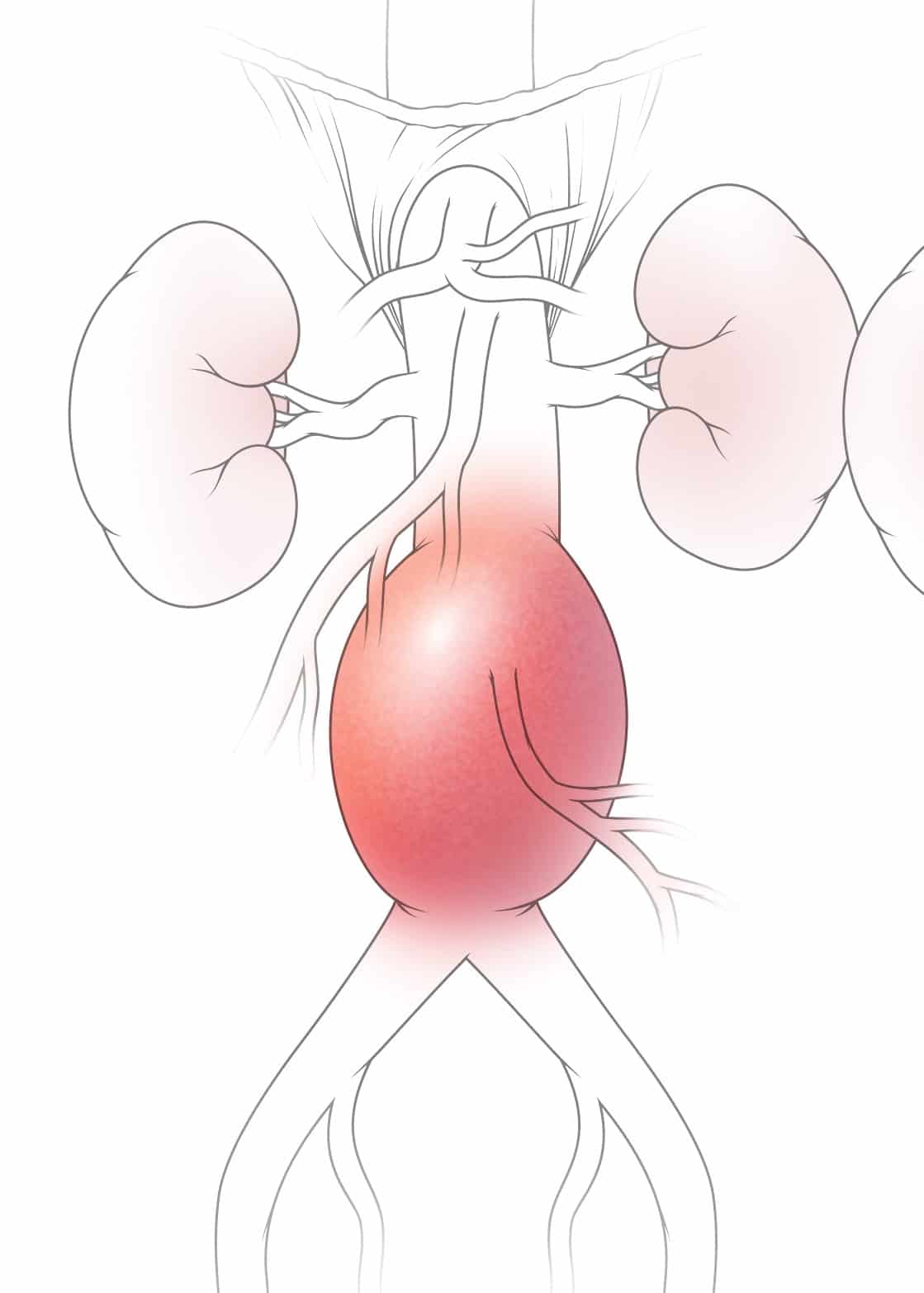- Aortic Disease
- Abdominal Aortic Aneurysm (AAA)
Abdominal Aortic Aneurysm (AAA)
What is AAA?
AAA is an enlargement, or bulge in the main artery in the body (aorta) that supplies blood to the rest of the body. AAA occurs in the abdomen; if left untreated can rupture, leading to severe pain and lethal internal bleeding.
Symptoms of AAA
AAA often develops slowly overtime without symptoms. Enlarged AAA may present with the following symptoms:
- Deep and constant pain in abdomen or side body
- Back pain
- Pulse or throbbing near the belly button
- If pain is sudden and severe, seek immediate medical attention.

What causes AAA?
AAA is most often caused by:
- Hardening of arteries (atherosclerosis)
- High blood pressure
- Blood vessel diseases
- Infection of the aorta
- Trauma
Risk factors for developing AAA include:
- Current or previous smokers
- Genetics or family history of aortic disease
- Age
- Race or ethnic background
- Men ages 65 to 75 should have a one-time screening for AAA.
Diagnosis for TAAA
AAA is frequently detected during an examination for other routine medical tests such as ultrasounds of the heart or abdomen. Family history, physical exams and imaging are used to confirm AAA. Ultrasounds, CT Scans, and MRIs are used to identify severity and location of the aneurysm, and to help assess treatment options.
Treatment for TAAA
Medical monitoring and surgery options are available for treatment. Depending on severity, age, genetic mutations, family history and other conditions the physician or surgeon may suggest regular imaging and doctor’s appointments to monitor size, growth, and development of the aneurysm. If surgery is needed, there are two for surgical options. An open surgical repair utilizes a synthetic tube (graft) to replace the aneurysmal aorta. Another option is endovascular surgery and is performed less invasively through small incisions the arteries in the groin area. A catheter is threaded through the artery up to the aneurysmal aorta where the stent expands to fit in the normal aortic wall above and below the aneurysm. You can discuss with your doctor which treatment option is best for you.


